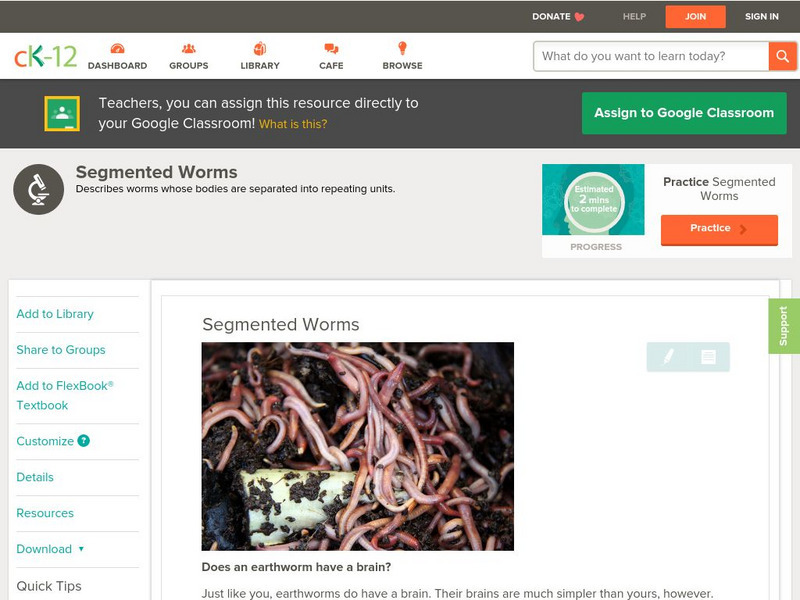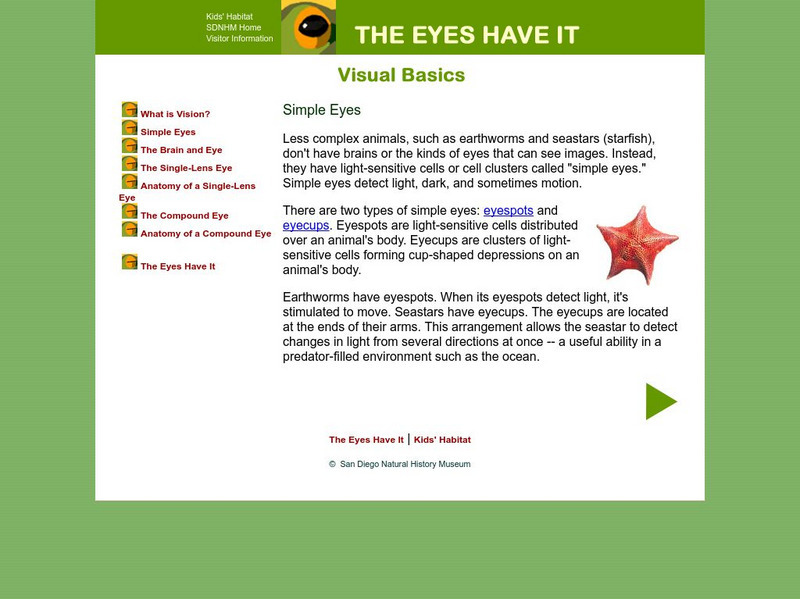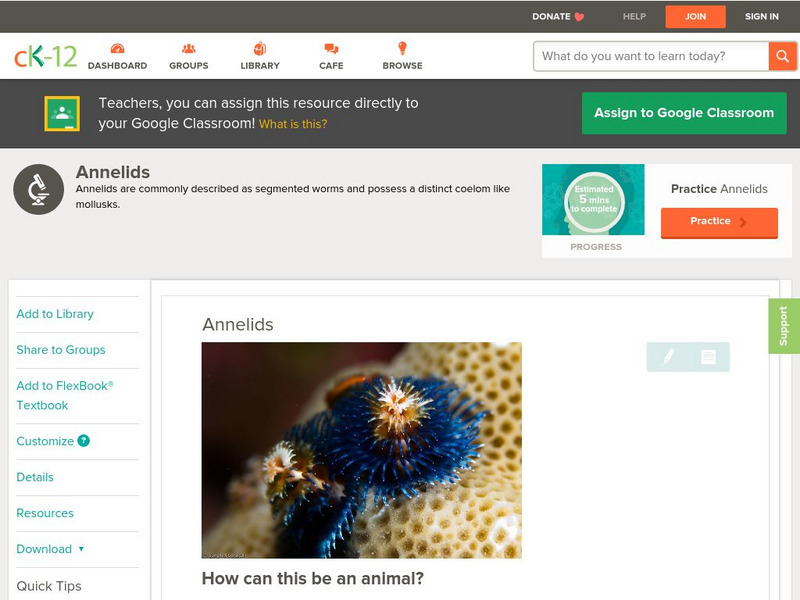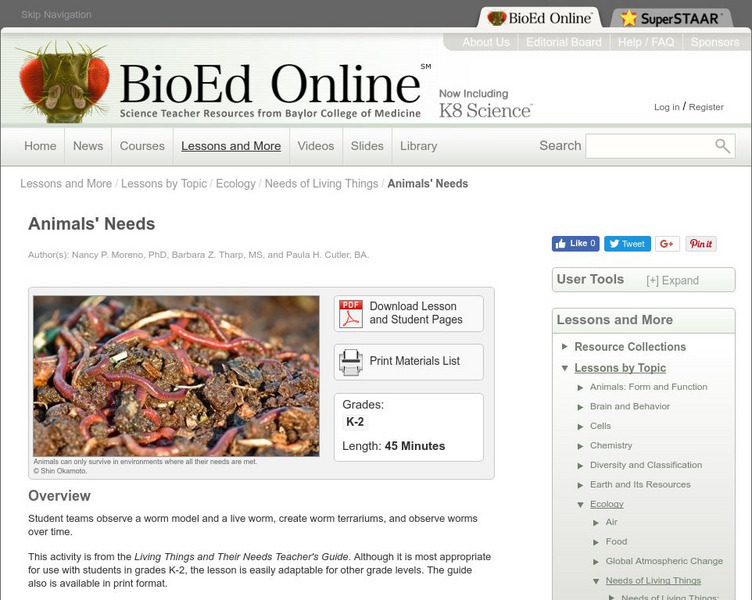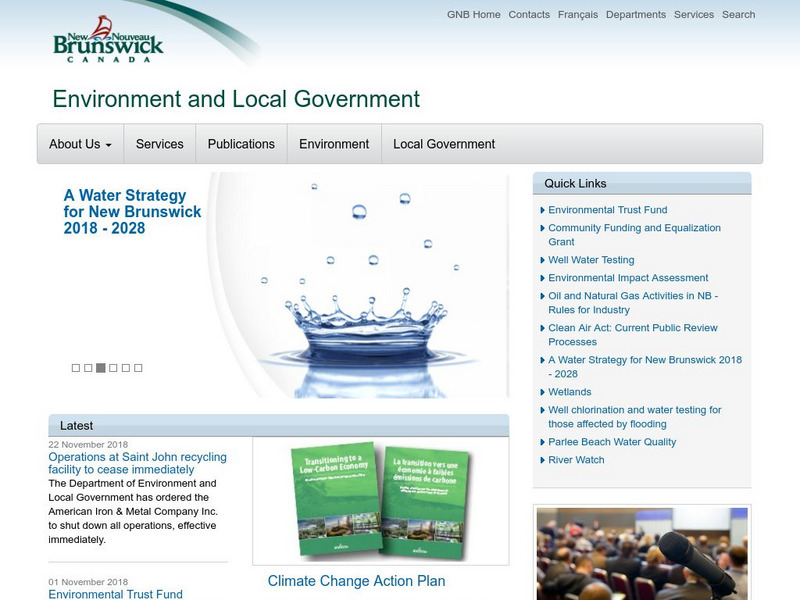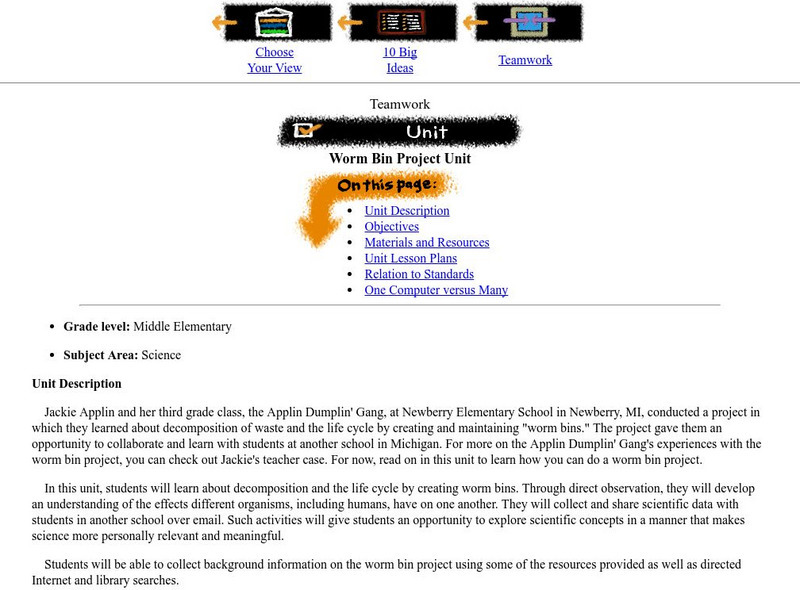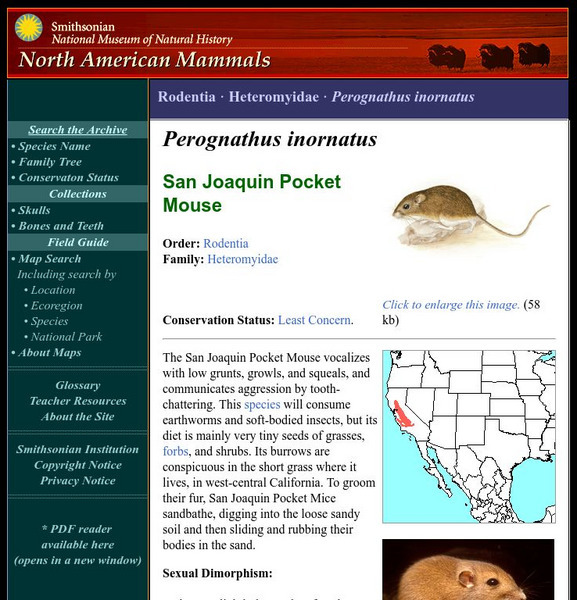Hi, what do you want to do?
CK-12 Foundation
Ck 12: Life Science: Segmented Worms
[Free Registration/Login may be required to access all resource tools.] When you think of worms, you probably picture earthworms. There are actually many types of worms, including flatworms, roundworms, and segmented worms. Earthworms...
San Diego Natural History Museum
San Diego Natural History: Kids' Habitat :The Eyes Have It Simple Eyes
Earthworms and other simple animals like the starfish have a different eye structure known as a 'simple' eye.Learn about its anatomy and how it functions.
Other
Uk Safari: Creepy Crawlies
Click on a picture of an arthropod, such as an earthworm, spider, or slug, and a picture, description, and other facts will appear along with the photo of the insect.
Other
Cartage.org: Types of Circulatory Systems
This thorough resource examinces the several types of circulatory systems and provides drawings of these systems in molluscs, arthropods, and the earthworms.
CK-12 Foundation
Ck 12: Biology: Annelids
[Free Registration/Login may be required to access all resource tools.] Discusses characteristics of annelids like earthworms.
BioEd Online
Bio Ed Online: Living Things and Their Needs: Animals' Needs
Students learn about the basic needs of animals by creating and observing a worm terrarium. The lesson and student worksheets can be downloaded in PDF format.
Regents of the University of Michigan
Animal Diversity Web: Phylum Annelida (Segmented Worms)
Outlines the morphology common to Annelid classes as well as their development.
Other
New Brunswick Waste Management /"Backyard Magic"
Comprehensive description of the environmental benefits of composting solid waste. Complete directions for composting, detailed description of composting chemistry, suggestions for applications of humus, question and answer page,...
University of Illinois
University of Illinois Extension: Claude's Got the Scoop on Soil
Students learn about how soil is made, who really needs soil, and what happens to soil if you don't take care of it.
TED Talks
Ted: Ted Ed: Vermicomposting: How Worms Can Reduce Our Waste
Nearly one third of our food ends up in the trash can. Matthew Ross details the steps we can all take to vermicompost at home, and why it makes good business sense to do so. [4:29]
University of Illinois
University of Illinois Extension: Urban Text: Adventures of Herman the Worm
WORMS- What are they? Where did they come from? If you are interested in Herman the Worm's family tree (biologically speaking), his body structures, or all the facts about him that you'll ever need, go to "The Adventures of Herman the...
Utah Education Network
Uen: What's Different About These Worms?
Observe three different worm models and identify characteristics.
Michigan State University
Michigan State University: Lets Net: Worm Bin Project Unit
Students learn about the worm life cycle and decomposition of life by creating small-scale worm ecosystems. Research groups share scientific data with groups at other schools using web-based communication tools.
Enchanted Learning
Enchanted Learning: Pond Life Animal Printouts
Filled with printable pages of both plant and animal pond life, Enchanted Learning features fact sheets with color pictures.
Enchanted Learning
Enchanted Learning: Taiga Animal Printouts
Colorful pictures of animals found in the taiga biome such as the arctic fox, bald eagle, gray wolf, and muskrat. Information is provided about each animal when clicked.
Museum of Science
Museum of Science and Industry: Online Science: Construct a Worm Farm
Clear instructions, with a photo of each step, explaining how to make a 'worm farm' in a large jar.
CK-12 Foundation
Ck 12: Life Science: 9.5 Segmented Worms
Learn about the physical features of segmented worms.
Smithsonian Institution
National Museum of Natural History: American Mammals: San Joaquin Pocket Mouse
The San Joaquin Pocket Mouse vocalizes with low grunts, growls, and squeals, and communicates aggression by tooth-chattering. This species will consume earthworms and soft-bodied insects, but its diet is mainly very tiny seeds of...
Smithsonian Institution
National Museum of Natural History: American Mammals: Montane Shrew
Montane Shrews are among the most common shrews, and do well in a variety of moist habitats: thick, grassy areas near streams or rivers; meadows; thickets of willow and alder; spruce-fir forests; and alpine tundra. They are dietary...
Smithsonian Institution
National Museum of Natural History: American Mammals: Ermine
Ermine are highly adaptable predators, easily invading small burrows to feed on voles, mice, and young rabbits. They also eat earthworms, frogs, and squirrels, climbing trees and swimming if necessary. Learn more about the Mustela...
Science Museum of Minnesota
Science Museum of Minnesota: Worms
This adaptable class project, developed by a first grade teacher, reveals the secret world of worms.
Other
Covington Independent Public Schools: A Worm Farm
Students will observe firsthand that worms change organic waste into soil. Directions and a cut/paste worksheet are included in this lesson.
CK-12 Foundation
Ck 12: Life Science: 9.1 Invertebrate Diversity
Understand the biological diversity and classification of invertebrates.
Other
Worm Woman's Web Site
Basic introduction to former biology teacher Mary Appelhof's books on vermicomposting at home/school/small businesses. Moderate autobiographical information on Applehof and her goals and purpose for vermicomposting. Brief description of...
Other popular searches
- Earthworm Dissection
- Earthworm Anatomy
- Earthworm Activities
- Earthworm Answers
- Earthworm Parts
- Earthworm Habitat
- Earthworm Life Cycle
- Nitrogen Cycle Earthworms
- All About Earthworms
- Earthworm Heart Rate
- Earthworms and Soil
- Earthworms Experiment





